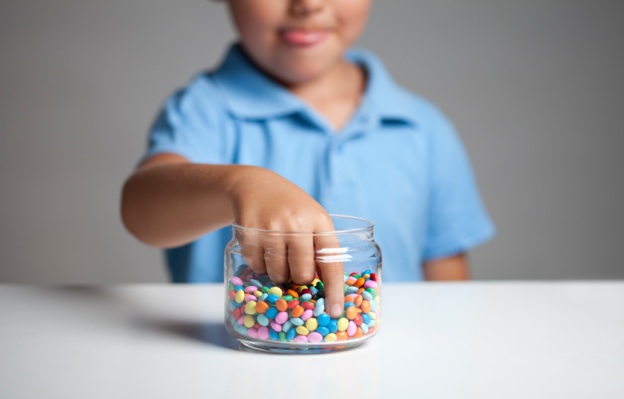SingaporeMotherhood | Preschooler & Up
January 2013
A Kiddy Feasting guide for the Chinese New Year

Ms Letty Shiu, a Nutritionist at the Youth Health Division of the Health Promotion Board, offers timely advice on how to rein your child back when he or she is faced with a plethora of yummy Chinese New Year goodies.
Chinese New Year (CNY) is just around the corner. During this festive season, there’s reason for the whole family to tuck into the many goodies. As these goodies are seasonal and served only during CNY, it may be difficult to give them a miss. However, most CNY goodies such as pineapple tarts and other cookies are made of flour, sugar, butter, margarine and oil and are high in calories.
[banner][/banner]
Healthy eating is not about total abstinence from food that are high in fat, sugar and salt. You can still consume them but take into consideration portion size, and frequency. Moderation is the key. In this case, take a small portion of these goodies (e.g. two – three small pieces) and keep the rest away for another time.
Here are other tips to help children eat more healthily during this festive period.
When going on your rounds of visiting:
• Don’t go to visiting ravenous. Offer your child a small snack (e.g. a small sandwich or bun or a piece of fresh fruit) before heading out. If he is not hungry, it will be easier for him to resist the platters of snacks.
• Monitor your child’s portions and choices of food. Watch what he is eating, and how much.
• Remind them to eat slowly. This can help to prevent overeating. It takes 20 minutes for the brain to register that the stomach is full.

• Remove the skin and fat from meat and poultry before eating.
• Give them less gravy and sauces.
• Choose food prepared with healthier cooking methods such as steamed, boiled, grilled, baked and stewed food.
• Get them to drink plain water instead of sweetened drinks/soft drinks. Alternatively, dilute sweetened drinks with ice or water.
Here’s a quick lowdown on what popular CNY foods contain:
Bak Kwa
High in energy, fat and sugar. Two slices contain 600 kcal of energy (the same as a plate of chicken rice). About 75% of this comes from the fat in the meat and sugar or honey which are added for flavouring. Salt is also added as a flavouring agent and as a preservative. Two slices of bak kwa contain about half the recommended daily level of salt.
Eat No more than one slice a day.
Pineapple tarts
High in fat and sugar. Three pieces have 300 calories, equivalent to one bowl of rice, but with far more fat and sugar (about five teaspoons!).
Eat No more than four tarts a day.
Preserved meats
(Eg: Chinese sausages and waxed duck)
High in fat and salt. Two pieces (40g) of waxed duck contain about 880 mg of sodium (2 g salt). This is about half the recommended daily limit of 2,000 mg sodium (5 g salt). One small link of Chinese sausages contains almost the same amount of fat as half a plate of fried kway teow.
Eat In moderation.
Sweetened beverages
A can of soft drink contains six to eight teaspoons of sugar. Carbonated soft drinks have about 20% higher sugar content compared to non-carbonated ones.
Drink Healthier beverages such as plain water, sparking mineral water, reduced sugar drinks or sugar-free soft drinks.
All content from this article, including images, cannot be reproduced without credits or written permission from SingaporeMotherhood.
Follow us on Facebook, Instagram, and Telegram for the latest article and promotion updates.





